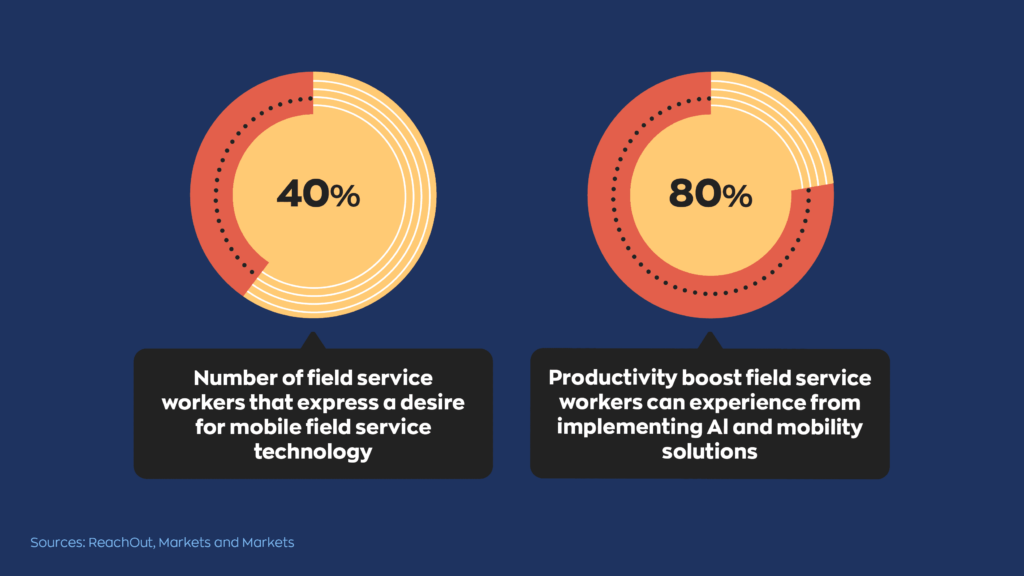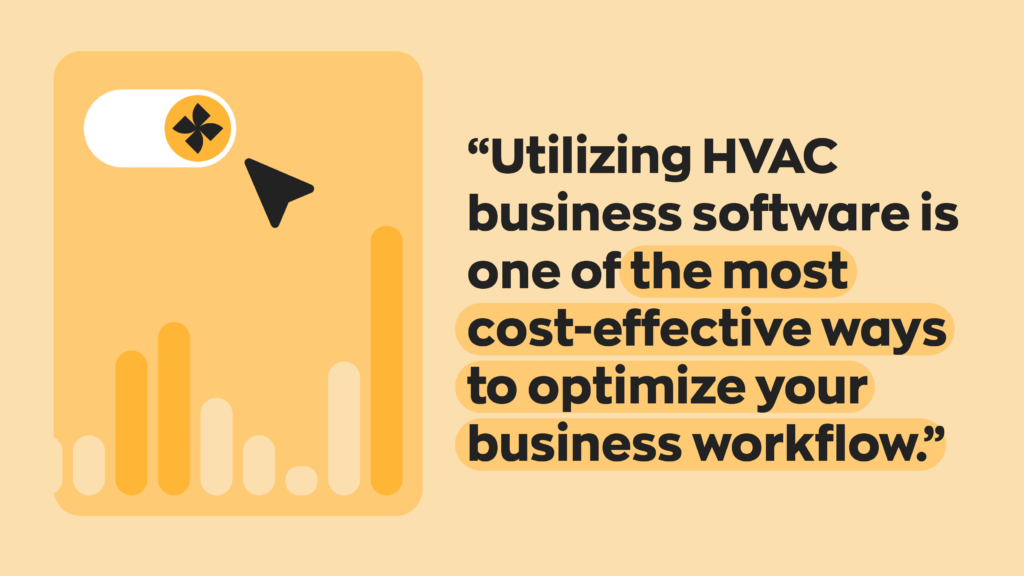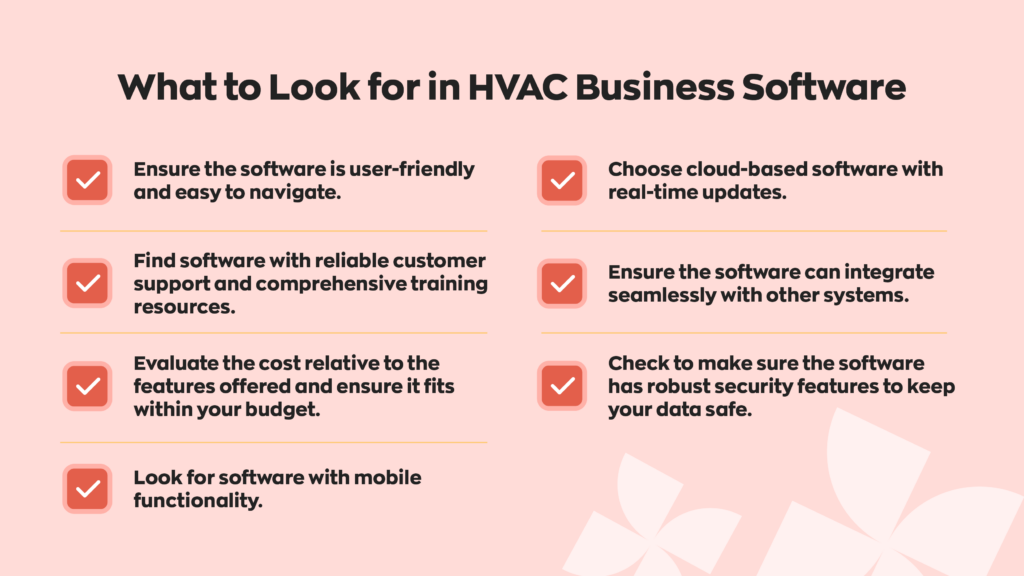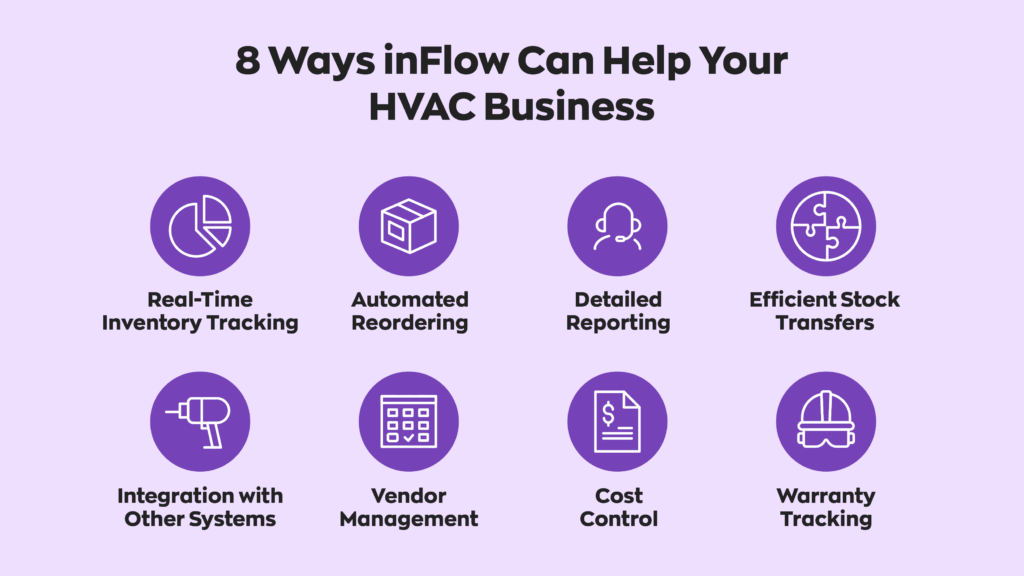It’s no secret that as technology develops, we continue to integrate it further into our daily lives. The large, multi-room computers of the past now fit in the palm of our hands, transforming how we live and do business. For years, the HVAC industry has utilized technological advances for their hardware needs, but more recently, HVAC business software has been gaining popularity.
The rise in HVAC business software aims to streamline processes via automation, easing the burden on human workers. However, there’s a lot of HVAC software available, and finding the ones worth your time and money can be challenging. Different programs address different problems, and each offers its own functionality.

In today’s article, we’ll help HVAC businesses navigate the plethora of software solutions available. We’ll focus on some common problems HVAC companies face and some HVAC software solutions that can help.
What challenges can HVAC business software solve?
For the most part, HVAC businesses are field services. A few exclusively sell units and components, but most offer installation and repair services. That means traveling to worksites to address various issues. While necessary, this constant movement also introduces complications. Here are some of the most common (and challenging) ones.
Lack of automation
Despite the recent AI craze, there’s no true replacement for a human employee. This is arguably more true for HVAC, where technician experience trumps conventional knowledge.
That doesn’t mean AI and software can’t help your HVAC business, though. It’s all about applying it correctly. HVAC management software can automatically track and send job site invoices, record sales and stock levels, and much more.
These are all menial, repetitive tasks that a program handles better than a human. Delegating them to HVAC service software lowers the error rate and opens up more time for technicians to work.
Bad scheduling
Not every technician shares the same skillset. Seniority and individual expertise are also factors to consider. Multiple sites may require the same skill set, and it’s your job to determine the most efficient route.
Suboptimal routes increase the time technicians spend on the road, increasing the time it takes to finish a job. It’s difficult to calculate, but over time, this can cost your HVAC business big time.

No data analytics
We have a tendency to think of marketing and sales data as something for retailers and large corporations. That’s far from true. It’s important for small to medium-sized businesses in every industry, including field services. Just tracking job site locations and payments alone yields valuable data.
However, without HVAC business software, that data is hard to collect and even harder to use. Someone with an analytics background can parse through the information, but that takes lots of time. Feeding that same information into a computer system will give the same information much more quickly.
Poor inventory and equipment management
HVAC technicians need access to a variety of tools and equipment. Some are simple tools, like hammers or wrenches, and others are large and expensive. Regardless, technicians will need to transport them frequently. While that’s not a problem with the right vehicle, the high cost of some equipment prevents owning multiple units.
HVAC components and systems also tend to be expensive in general. This overall high cost of operations necessitates a delicate balancing game. Too much inventory ties up capital, but too little, and you risk being unable to service systems correctly or on time.
A perpetual inventory system can automatically track stock levels. Barcodes also make it easy for technicians to scan the components as they use them, updating inventory levels in real-time. The system can even track who takes what equipment where.
Top HVAC business software
We said this before, but there’s a lot of software out there. Finding the right solution at the right price can be difficult. Many systems also operate on a cloud structure now, meaning stability and accessible support is crucial. Here are some of the most prolific software solutions available, along with their use case.

Housecall Pro
Housecall Pro offers HVAC business software that streamlines a variety of processes. It focuses more on customer management and allows users to create and share detailed proposals with potential converts.
Jobber
Like the previous two, Jobber boasts field management software across various industries, including HVAC. Jobber improves communication by implementing automatic messaging and providing customers with easy-to-use booking software.
BuildOps
BuildOps advertises itself as the #1 software for HVAC contractors. It focuses on helping businesses scale, cutting costs, and increasing cash flow. Like many others, it does so by automating tasks and reducing physical paperwork.
Kickserv
The last general HVAC software on this list, Kickserv, offers a host of features. Users can schedule across multiple calendars, complete with events and other tasks. Digital signatures and advanced payment processing reduce the time it takes to receive a customer’s payment.
Podium
The first non-field service management mentioned on this list is Podium, which is a communications platform for businesses. They’ve recently leaned heavily into AI and now offer artificial customer service representatives. Podium claims that its services keep 58% of customers from moving on after missing a call.
inFlow
Tracking inventory and assets is a major headache for HVAC businesses, and inFlow aims to cure those headaches. It can track what assets and components you have, what you use, and when you need to order more. Its built-in barcoding features also make it ideal field management software for HVAC businesses on the go. It even has tools that allow you to send invoices and take payments online (US and Canada only).

QuickBooks Online
QuickBooks Online is a cloud-based accounting system that tracks cash flow, fulfills payroll, and much more. It’s another instance of using technology to perform repetitive tasks. QuickBooks Online can also generate a variety of useful reports. Due to its popularity, it integrates with many other HVAC business software, such as inFlow.
Xero
Another popular accounting platform, Xero, shares many similarities with QuickBooks Online. Users can claim expenses, run payroll, and reconcile statements with their accounts. It also features project tracking, giving it a variety of applications for different businesses. Just like QuickBooks Online, it also offers integrations with software like inFlow.
Use compatible HVAC business software solutions
Everyone wants an ideal system that does everything, but the hard truth is you’ll need more than one. Specialization is important. Focusing on doing one thing really well is often better than being mediocre at a lot of different things. That means multiple solutions for different tasks.
But these solutions need to work together. Manually inputting data into multiple HVAC business software solutions puts you back at square one: performing tedious tasks. This is why integrations are important when deciding what to implement. They allow HVAC business software to communicate with other programs, sharing useful data.
It’s important to remember that you’re not just going digital; you’re building a system from the ground up. Starting with a strong foundation that can seamlessly integrate with new pieces is crucial to success.






0 Comments